Art World
How One Artist Transformed Old Master Paintings Into a Beguiling Capsule Collection for Gucci
The collection, titled "Gucci Hallucination," is another example of the brand's ode to art history.
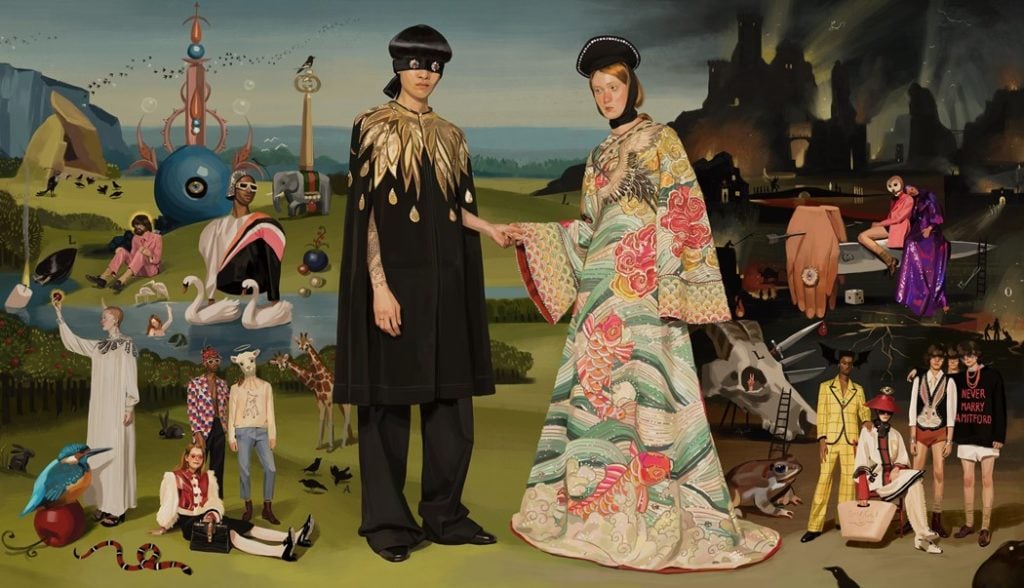
The collection, titled "Gucci Hallucination," is another example of the brand's ode to art history.

Christie Chu

Since Alessandro Michele took the helm of Gucci, the Italian fashion house has experienced a creative rejuvenation. By invoking a mixture of pop culture, folklore, and art history, Michele has been able to inject a new sense of imagination into the century-old brand. Compelling visual storytelling has bolstered a revival in the ingenuity and creativity of the garments themselves. Beyond traditional photography, the house has explored new creative outlets, from Instagram campaigns to artist collaborations. Over the last two years, Michele has invited upstart artists such as Unskilled Worker, Coco Capitán, and GucciGhost to bring their own vision to house collections.
Ignasi Monreal is another member of that select group. No stranger to the storied house, the Spanish artist participated in the Instagram-driven #GucciGram project in 2015, and he created the visuals for the brand’s 2017 Gifting campaign. Now, he is back at it again with a release of a limited edition capsule collection of t-shirts and sweatshirts. Emblazoned with artworks he produced for “Gucci Hallucination,” the house’s spring 2018 campaign, the twin-pronged collection will be released in editions of 200.
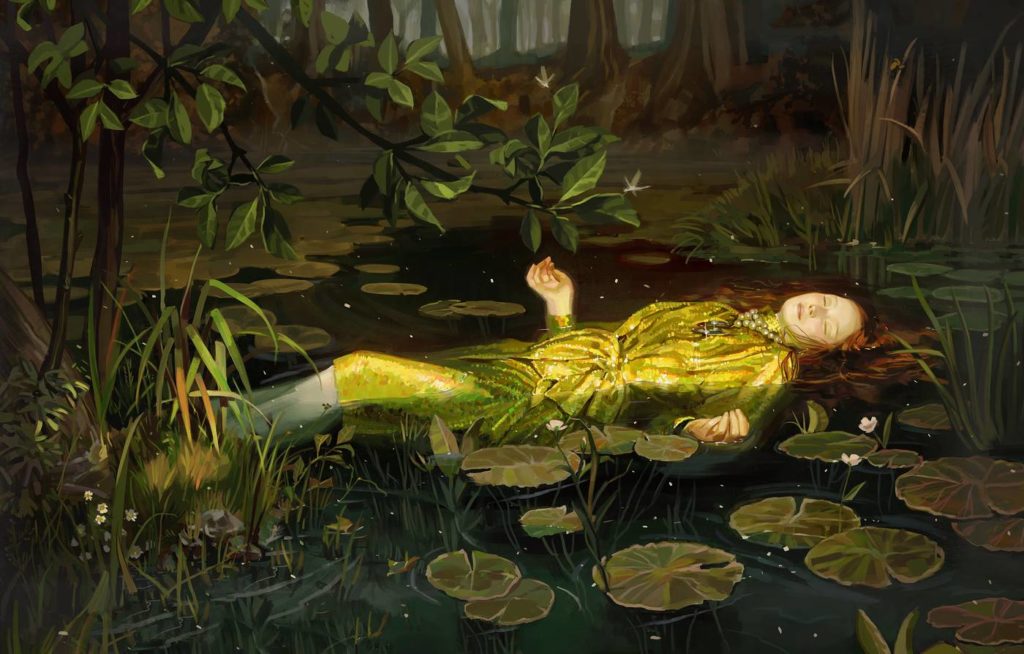
Ignasi Monreal for Gucci, inspired by John Everett Millais’s Ophelia (1852) Tate Gallery in London. Image courtesy of Gucci.
Monreal’s collection takes its primary inspiration from Old Masters paintings. The artist says he hopes to enlighten a younger generation about the cultural significance of the historical works.
“When you look at the scenes, characters, feelings depicted and strip down the historical costumes, you realize how timeless the artist’s message is, how acutely they’ve noticed something about people and their relationships,” Monreal told artnet News. “Aesthetically, they are just unbeatable, and they made a huge impression and impact on me when I was just getting into art.“
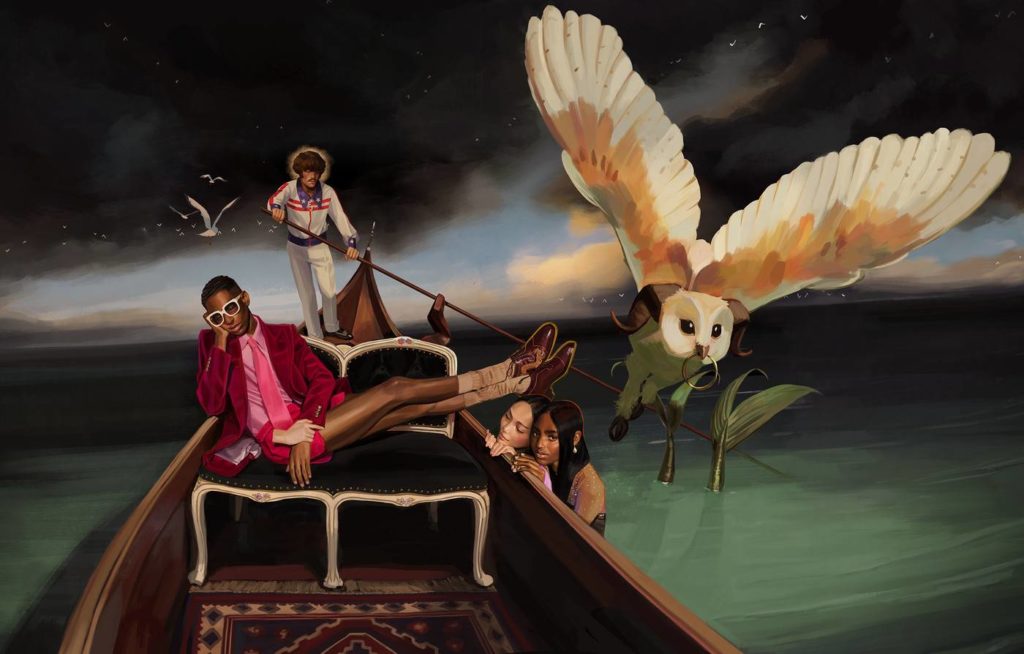
Ignasi Monreal for “Gucci Hallucination,” 2018. Image courtesy of Gucci.
The artworks Monreal created for the campaign also invite us to enter and explore the Gucci universe. One piece takes fantastical characters from the Gucci runway and drops them into one of the most well-known Renaissance mise-en-scenes: Hieronymus Bosch’s spectral tableaux, The Garden of Earthly Delights. In another painting, Monreal cleverly references the Pre-Raphaelite painting Ophelia by John Everett Millais. Other visuals were conjured from the artist’s own imagination, including a scene of Gucci-clad mermaid models lounging lakeside clutching their iPhones and a flying unicorn resting at a parking lot near a pair of slides.
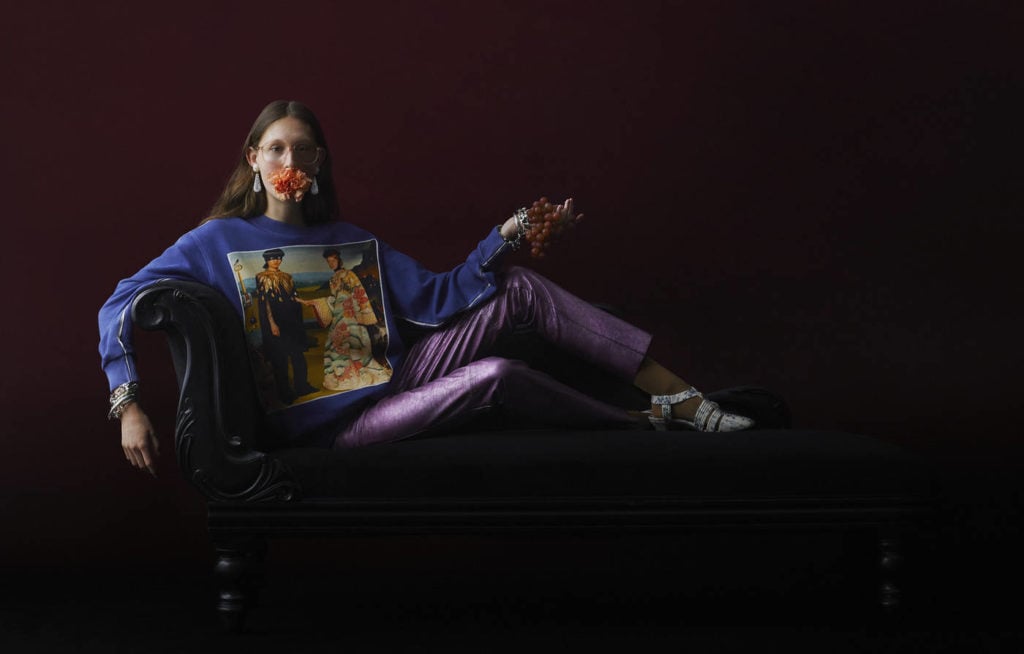
Ignasi Monreal for “Gucci Hallucination,” 2018. Photo: Julia Hetta. Image courtesy of Gucci.
“I think the Gucci campaign is quite special, as it’s a first photo-free, first fully digitally painted fashion campaign,” the artist says. “This old-new medium is what really stands out. With everyone sharing so much via photography now, it can—and I hope it does—feel quite refreshing. I was very honored to be part of this project, and I think it really changed the way people look at digital art now.”
By exploring the overlap of fashion, art, and digital media, Gucci aims to stimulate conversations that resonate both inside and outside of the fashion world. Monreal says Gucci’s creative director is uniquely suited to explore those intersections. “Alessandro Michele is an incredible visionary with an amazing sense of aesthetics and relevancy,” the artist says. “The Gucci team is incredibly supportive and giving, you really become a part of the Italian family.”
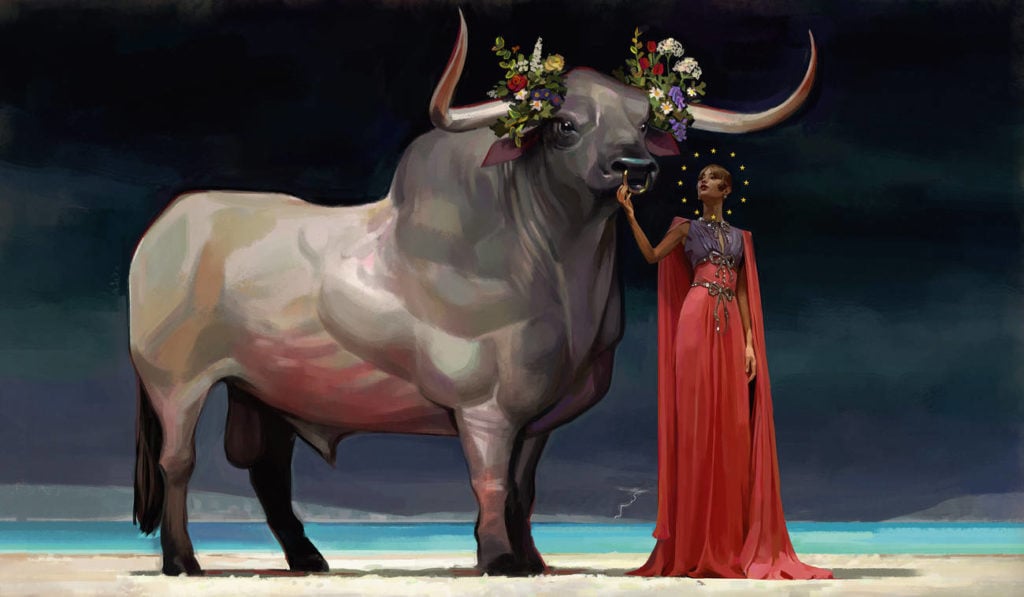
Ignasi Monreal for “Gucci Hallucination,” 2018. Image courtesy of Gucci.